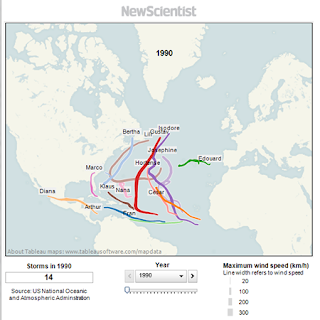Despite the expansion of mortgage debt in the last decade, according to the latest American Community Survey data one third of owner-occupied households (i.e. those owning – not renting or leasing – their house, condo, apartment, etc.) own their homes “free and clear” of any mortgage or home equity loan. In gathering this data, the Census Bureau’s American Community Survey questionnaire asks whether owner-occupied properties have a “mortgage, deed of trust, or similar debt,” and in the absence of any primary mortgage, whether there is a second mortgage or home equity loan (questions 19 and 20). Nationally, more than 24 million homes – 32.8% of owner-occupied housing units – have no primary or secondary mortgages. The prevalence of free and clear mortgage status for owner-occupied housing units varies regionally from 23.5% in Maryland, to 50.3% in West Virginia:
<a href=”undefined”><img alt=”Dashboard 1 ” src=”http://public.tableausoftware.com/static/images/Mo/MortgageStatusAgeandIncome/Dashboard1/1_rss.png” style=”border: none” /></a>
Connecticut lags slightly behind the national average in the percentage of owner-occupied housing units owned free and clear in the state; according to American Community Survey 2010 data, 28.5% of owner-occupied homes in Connecticut have no mortgage debt. Of these households, trends in the age of the householders, and median household income, were consistent with national trends. About 60% of the householders (the individual completing the ACS questionnaire) in mortgage-free households were 65 or older; 39% were aged 35-64, and only 1.4% were under 35. In Connecticut, as in all states, median household income in owner-occupied homes is significantly less than in households where the home is mortgaged. Median household income in Connecticut among households carrying a mortgage was $94,298, while median income in mortgage-free households was $52,435.
Homeownership and mortgage status data were also gathered by the 2010 Census. Question 3 of the 2010 Census questionnaire asked if the housing unit was either “owned by you or someone in this household with a mortgage or loan? Include home equity loans”, or “owned by you or someone in this household free and clear (without a mortgage or loan)”. For mortgage status information at the town level, the Census 2010 data provides more current data than the ACS 5-year Estimates. According to 2010 Census figures, 26.4% of owner-occupied homes in Connecticut were owned free and clear (slightly less than the figures published for the 2010 ACS 2010 1-year estimate). Free and clear status among owner-occupied homes among Connecticut towns ranged from 16.2% in Sterling, to 41.2% in Cornwall.
<a href=”undefined”><img alt=”Dashboard 1 ” src=”http://public.tableausoftware.com/static/images/of/ofCThomesownedfreeandclear/Dashboard1/1_rss.png” style=”border: none” /></a>
For detailed data from the American Community Survey in American FactFinder, see:
For additional data on mortgage status from the 2010 Census in American FactFinder, see:









